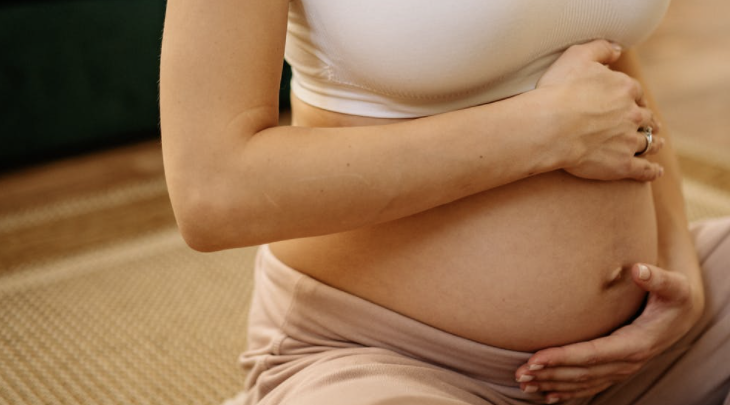Unsurprisingly the abdominal muscles go through a considerable amount of change in pregnancy. While women may be aware that exercises such as crunches and sit ups are not suitable as the pregnancy progresses, a number are unaware that there are some essential core exercises it is positively beneficial to do.
As a general rule, normal abdominal training is able to continue in the first trimester if it is still comfortable (subject to complications). However as the bump grows and the body begins to change, the type and style of the exercises need to adapt with it. Inevitably the abdominal muscles have to stretch to accommodate the growing baby and there are a number of hormonal changes that take place at this time which impact on the joint and ligament stability.
From 16 weeks onwards it is advised to move away from activities which involve strongly working the rectus and obliques such as curl ups, crunching or twisting the torso as this can promote diastasis recti. Instead you want to focus on exercises that create space for the baby and enhance the corset of support. However I can’t emphasise enough that every pregnancy is different so exercises that are fine for one mother may be challenging for another.
Both the transverse abdominis (TVA) and pelvic floors help support the weight of your growing baby and it is therefore key to keep these maintained in pregnancy. When activated, the TVA muscles create a deep natural “corset” around the internal organs and lumbar spine (the lower back). This corset functions by compressing your ribs and abdominal muscles and helps expel air during forced exhalation. It is actually one of the muscles that helps to deliver the baby. In strengthening the TVA it not only helps to stabilise the spine and prevent back pain as the bump grows, but has also been shown to minimise the risk of diastasis recti (separation of the rectus abdominis muscles which meet down the middle of the stomach). Furthermore, postnatally it can aid the return of the tummy area back to its pre-pregnancy state quicker.
An effective way to activate and isolate the TVA muscle from other muscles is by doing a technique called ‘Abdominal Hollowing’. This essentially pulls in the abdominal muscles, moving the navel towards the spine without moving the ribs or pelvis. This can be performed in any position (although it is advised not to lie on your back in pregnancy from 16 weeks onwards). I tend to teach it on all fours as the weight of the baby and internal organs add resistance for the TVA muscle to work, which helps to make you more aware of the muscle. Stability exercises such as ‘Bird-dog’ are also often used in prenatal Pilates as they are a lovely bodyweight low impact exercise that not only targets the abdominals, but also the lower back and glutes.
As mentioned above, all mothers and pregnancies are individual and what is comfortable for one may be difficult for others. Therefore above all else, always listen to your own body – it’s an amazing machine!
Abdominal Hollowing:
Come to ‘all fours’ position – Your spine should be in a ‘neutral’ position with your hands directly under your shoulders and shoulder width apart. Your knees directly under your hips and hip width apart.
Inhale deeply, allowing the air to fill into the sides and back of the ribs. This is known as Lateral Thoracic Breathing.
As you exhale gently lift the pelvic floor keeping the pelvis neutral (ensuring you don’t tuck your bottom under) and draw in your belly button, ‘hugging’ in all the way around your middle. This movement of ‘pulling’ your baby in towards the spine will activating the TVA.
Hold for a couple of seconds, then release.
Bird-Dog:
Come to ‘all fours’ position – Your spine should be in a ‘neutral’ position with your hands directly under your shoulders and shoulder width apart. Your knees should be directly under your hips and hip width apart.
As you exhale, glide opposite arm and leg along the mat and lift up, extending straight out. Focus on forming one straight line from the extended hand to the extended foot.
Make sure to keep the hips square, and use slow and steady movements.
Hold for a few seconds, Inhale and bring them back to the floor and repeat on the other side.
As pregnancy progresses, this can be modified to assist with stability, by keeping the hand and foot connected to the floor in the extension.




Leave a Comment
You must be logged in to post a comment.